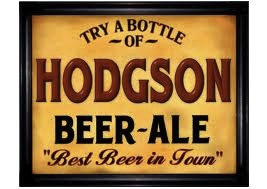India Pale Ale is the bread and butter of the craft brewer. The beer style derives from the British colonial age. One of the most important colonies of the British Empire was India. Since none of the British colonialists could be expected to rule over millions of Indian subjects without their night time ale, the British started dispatching loads of Pale Ale to these poor noble men.
The problem was, that Pale Ale was not very strong (3-4%), and the casks the beer was transported in were not really hygienic. So after spending six months in casks at around 30 degrees Celsius the beer tasted like piss.

So as legend tells it Hodgen’s Bow Brewery in Burton upon Trent invented a beer that could easily survive that journey. They doubled the strength of the beer (6-7%) and used a lot more hops in that beer. They even put a lot of hops into the casks. Hops is a natural preservative so through that, they had a beer that could easily survive the journey and these poor British officials could enjoy their ale. The beer became so popular in India that after a while other breweries (mainly around Burton) started copying Hodgen’s recipe and the term India Pale Ale was coined for that particular type of beer.
So now you got the history. But what is India Pale Ale now? India Pale Ale is pale ale (big surprise there) with an ABV form 5 – 7.5 %. It is extremely hoppy through a process called ‘Dry Hopping’. There hops is thrown into the fermenting vessels, where no bitterness can be extracted from the hops but only aroma. The bitterness of an IPA varies from 35 IBUs (that is the standard bitterness of a pilsner) up to 100 IBUs depending on the strength of the beer and what the brewer wants to achieve. But through the dry hopping lots of fruity, earthy, herbal or other interesting aromas can emerge into the beer. So there is no answer on how an IPA tastes. It depends almost only on the hops used. Because IPA is basically hops, hops and more hops.



